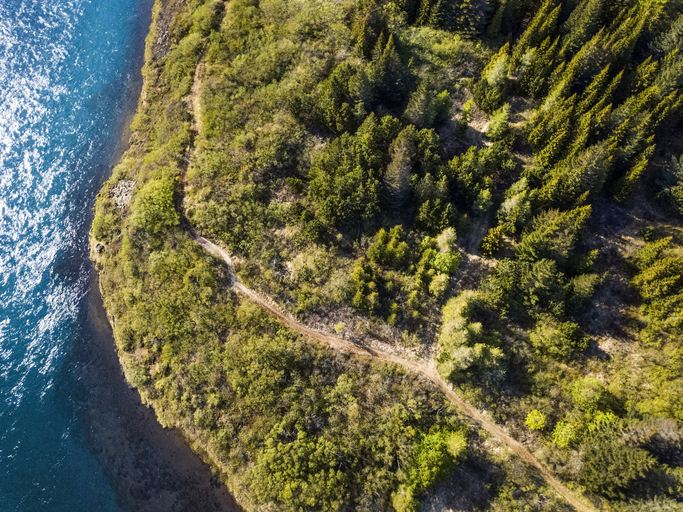When a country’s population gets wealthy enough, its preferences change. One well-established tendency is for richer countries to be more concerned about the environment, take pains to protect it, and even regenerate or recreate what has been lost.
A case in point is Iceland, the North Atlantic island nation most known for Vikings, snowy Game of Thrones scenery and splendid wildlife. For thousands of years, up to 40 percent of this inhospitable and majestic island the size of Kentucky was covered with birch forests and woodlands.
The first Viking settlers arrived on Iceland some 1,150 years ago, chopping down trees for firewood, ship-building, sheep-grazing and for fuel to power their blacksmiths’ forges. By around the year 1000 AD, reported the Museum of Iceland, the native birch forests had all but disappeared.
Today, forests cover less than half a percent of the island. That amounts to around 492 km2 out of a land area of 103,000 km2, according to the United Nations Global Forest Resource Assessment in 2015. Iceland’s own forestry service, using a less stringent definition, cites a figure of 1.9 percent. While grass, trees and moss can and do grow in the windy and rocky sub-Arctic landscape, they grow slowly – even in the lowlands of Iceland.
That said, Icelandic forests are growing again, and have been for some time. The Icelandic Forestry Service states that the switch from net deforestation to net reforestation occurred at some point between 1950 and 1980 – at GDP per capita levels roughly on par with today’s Brazil.
That’s just what the environmental Kuznets curve would predict. At first, during a country’s transformation from a poor and agricultural economy into a richer and more industrialized economy, its environment suffers. At GDP per capita of somewhere close to $5,500 (in 2005 U.S. dollars), a turning point generally occurs – people become more environmentally conscious and nature starts to recover.
From 1990 to 2015, Iceland’s forest area has grown at a compounded rate of 5 percent annually – tripling the island’s forest area. In some places, the photo shots of forests 50 years apart are as stunning and impressive as the withdrawal of the glaciers are substantial and scary. About one-fifth of the now-standing forests are classified as naturally regenerated forest, with the rest being planted in one form or another.
For decades, the forest service has funded reforestation efforts, and replanted forests are now a frequent sight in many areas of the island. That was done for commercial reasons as well as for protecting the soil from erosion. Even after the shock of the financial crisis in 2008, millions of trees have been planted every year, and efforts to regrow old forests and afforest new areas abound.
Afforestation efforts around the island include planting of forests in areas where they can protect towns and villages against dust storms emanating from the ever-eroding layers of volcanic soil. Icelanders are even experimenting with non-native tree species that could better deal with unpredictable effects of climate change in the future.
Even in the highland area of Thorsmark, the birch tree is returning after much effort by the forest service and concerned farmers who gave up their sheep grazing rights. Some of the afforestation includes non-native tree types, like the odd and orderly planted spruce, and pine trees that are visible along Iceland’s ring road. Different species are experimented with, ranging from iconic and native birch trees to other foreign species (e.g., Sitka spruce, Lodgepole pine and Russian larch). Slowly, Icelandic flora are making a comeback.
Interestingly, the forestation efforts have also received a welcome tailwind from an unexpected course – climate change and global warming. With slightly warmer temperatures and higher carbon dioxide concentration in the atmosphere, the saplings of Iceland’s sprawling forests are booming. Carbon dioxide is, after all, plant food and most places in Iceland that are suitable for forestry have an abundance of water from rain, snow and glacier meltwater. Over the last 40 years, the tree line has moved up the mountains – in some places by as much as 100 meters – allowing trees to grow in areas previously unavailable for afforestation.
The deforestation of this rich and pristine North Atlantic island nation happened largely because of rapacious Vikings, not because of the furnace of modern industry. The result, however, was the same: the barren and desolate landscape that welcomes visitors in today’s largely tree-less Iceland. Thanks to human affluence, human perseverance and, even, global warming – Iceland can once again become a great forested island.

